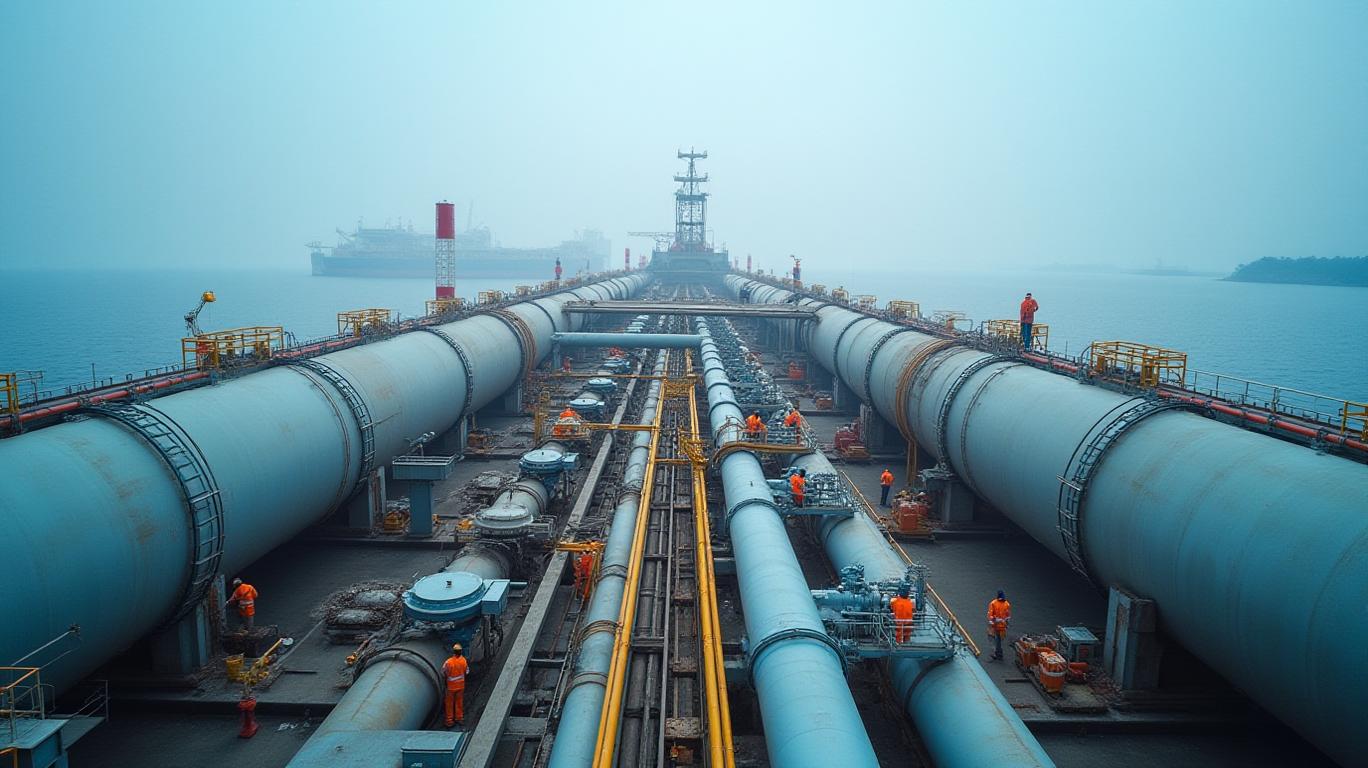China's LNG Import Ban: A Geopolitical Shift with Deep Market Implications
In April 2025, China’s customs data revealed a stark reality: U.S. liquefied natural gas (LNG) imports had plummeted to zero, marking the culmination of a months-long decline exacerbated by a 15% retaliatory tariff imposed in February. This abrupt cutoff, driven by escalating U.S.-China trade tensions, signals a profound shift in global energy markets and carries significant consequences for investors in both nations’ energy sectors.
The trade war’s roots stretch back to 2025, when the second Trump administration reimposed steep tariffs on Chinese technology and industrial goods. Beijing retaliated by targeting U.S. LNG—a move that quickly disrupted a once-vital trade relationship. While U.S. LNG accounted for just 3% of China’s LNG imports in 2024, the symbolic blow to U.S. energy exporters underscores the broader geopolitical rivalry. Ship tracking data illustrates the swift impact: after February’s tariff, U.S. tankers rerouted cargoes or offloaded them just before the ban took effect. One cargo was even diverted to Bangladesh to avoid losses, highlighting the operational chaos in energy markets.

The collapse of this trade relationship has immediate financial repercussions. For U.S. LNG exporters, China had been a critical market, accounting for 12% of their global sales in 2021. Companies like Venture Global and Sempra Energy had bet on long-term contracts with Chinese buyers to justify billions in capital expenditures for new export terminals. Now, over 20 proposed projects face existential uncertainty.
Meanwhile, Russia has seized the opportunity. In 2024, Russian LNG supplies to China were four times higher than those from the U.S., reinforcing closer energy and political ties. This shift aligns with Beijing’s broader strategy to reduce reliance on the U.S. across industries, from semiconductors to pharmaceuticals. For U.S. exporters, the blow is compounded by Europe’s declining demand, as the region accelerates its pivot to renewables and seeks LNG alternatives from Qatar and Australia.
The geopolitical fallout extends beyond energy. China’s LNG ban exemplifies its willingness to weaponize trade policy, while the U.S. LNG sector faces a reckoning over overbuilt capacity. Analysts estimate that without China, U.S. LNG projects may require sustained European demand—or a dramatic shift in climate policy—to remain viable. Yet Europe’s renewable energy investments, including record offshore wind projects, suggest that LNG’s long-term prospects there are dimming.
In conclusion, China’s suspension of U.S. LNG imports represents a strategic victory in its economic decoupling from the U.S., while leaving American energy firms grappling with stranded assets. The data is clear: U.S. LNG exports to China have gone from 9.3 MTPA in 2021 to zero in 2025, with over 20 projects now in jeopardy. Investors should brace for further consolidation in the U.S. LNG sector and consider diversifying into energy transition plays, such as renewable infrastructure or gas-to-hydrogen technologies, to navigate the shifting landscape. The LNG trade war isn’t just about gas—it’s a harbinger of how geopolitical rivalry will reshape global energy markets for years to come.










